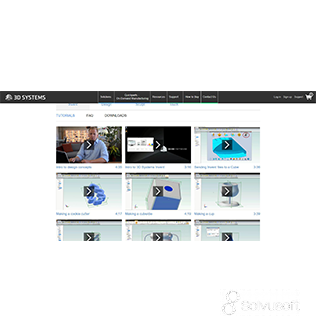
This photo booth at Autodesk HQ creates a 3-D model of a person’s head to be manipulated in 123D Catch.
#Cubify inventor how to
On both fronts, the question is: Can the kings of computer modeling learn how to remodel themselves? But the second, even more difficult challenge is cultural: Autodesk has to convince the most passionate members of the maker community, amateurs accustomed to dealing with small players more like themselves, that a multibillion-dollar public company has their best interests at heart. It must streamline its industrial-strength tools into user-friendly apps-transform its Abrams tanks into bicycles, as it were. The first is a design challenge of its own.

To pull off the Big Make, though, the design giant still needs to innovate its way past a pair of problems.
#Cubify inventor professional
Despite some recent financial travails (in August, lower-than-expected earnings forced the layoff of some 500 employees), Autodesk’s core professional business affords it enviable leeway to pursue the consumer market without jeopardizing its solvency. On paper, no firm is better positioned to take advantage of a maker-led future than Autodesk, whose 30 years of experience in computer-aided design give it unparalleled intelligence about the capabilities that designers want and need in their software.

But this is a trend, not a fad-something seismic is going on.” “They claim that it can’t possibly scale. “Some people see it as a niche market,” Bass says. Call it the Big Make: the pivot point when the maker movement, served for years by homely startups and open source projects, has grown large enough to catch the attention of serious and publicly traded players. Under Bass’ leadership, Autodesk has become the most prominent tech company so far to commit to a vision of the future in which makers-basement hobbyists, bootstrapped startups, boutique manufacturers-aren’t just a cultural force but a profit center too. The seller finally relented, set a fair price, and sent Bass a truckload of the wood he wanted.

He even sent pictures of boats he’d built professionally, during a year off from college (a period that grew to five years, before he returned to finish his math degree). So, over the next four weeks, Bass mounted a campaign to show that he was worthy of the timber. After spending the afternoon with them and interrogating them on various subjects, he declined to sell them anything and packed them off in the SUV. But the dealer was less impressed with his visitors than they were with his wood. (The wood seller had some offbeat ideas, including a deep suspicion of the government-hence, perhaps, the armored car.) Bass picked out some striped curly redwood to take home with him. Speakers blasted jazz and classical music at the lumber, because the dealer believed it would make the wood resonate better when used in fine musical instruments. Inside an enormous climate-controlled metal building in the Oregon outback, the three browsed an astounding array of wood: rare finds like bird’s-eye maple, curly redwood, and 20-foot lengths of ebony.


 0 kommentar(er)
0 kommentar(er)
